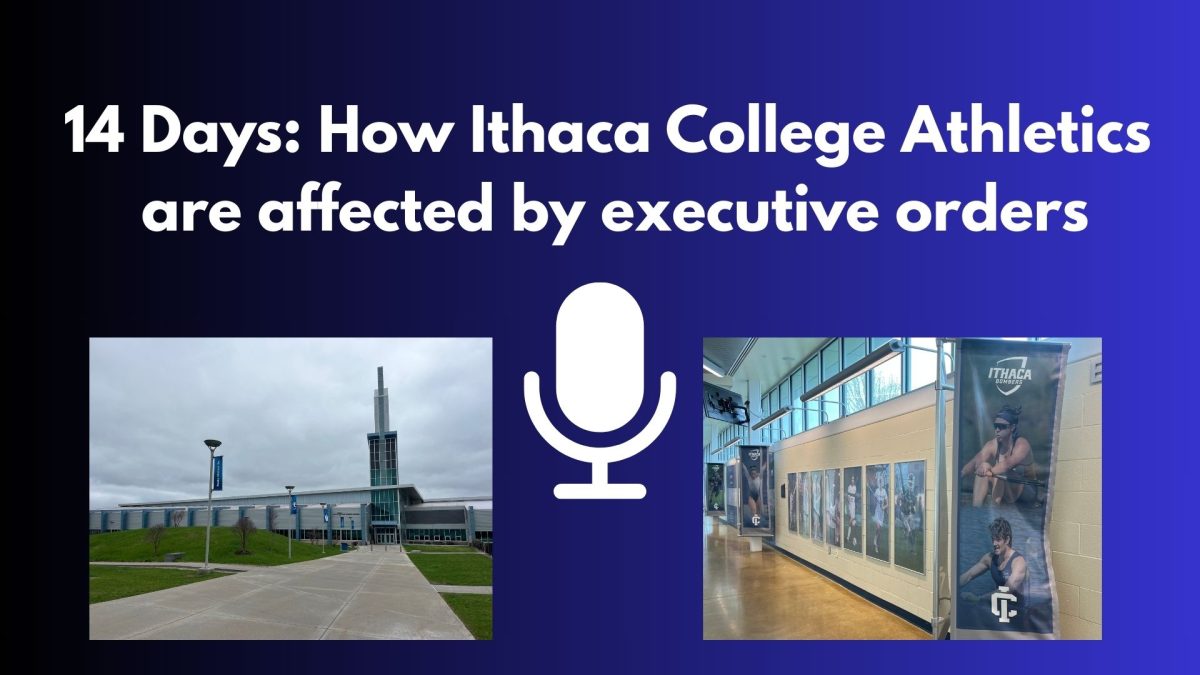By Ashley Wolf and Lisbeth Perez
Jamie Boubonnais, a freshman at Cornell University, has always had an interest in ice hockey. She became interested in the game through male family hockey players. At a young age, she decided she wanted to play and joined a Canadian boy’s hockey team. After a few years, she played for the girl’s team. She noticed the girl’s team focused more on technique and less on full-body contact.
Ice hockey is many times associated with full-body contact, but that is not the case with women’s ice hockey, said Hannah Bunton, a senior and co-captain for the Cornell University women’s ice hockey team. There is a misconception that because the sport is not full-body contact there is no roughness to it, she said.
“People think that when we say we can’t body check that it takes the physicality away from the game,” Bunton said. “If you come out to games you can see that there is in fact a lot physicality and body contact. There is just not as much of the open-ice hits that you would see in men’s ice hockey.”
Micah Hart, freshman and defensive player on the women’s hockey team, said although there is no full-body contact, there is more technique.
“I think it requires a lot more patience with the puck and also it puts that much emphasis on that skating of the game,” she said. “I think skating has a bigger emphasis on women’s hockey than men’s.”
Cornell is a Division I school, so many of their athletes hope to continue to play competitively after college, Hart said. Men have the chance to play in professional hockey teams, but women do not have the same level of professional success, particularly monetarily, she said.
There are two professional women’s hockey leagues, Bunton said. These two leagues are the Canadians Women Hockey League and the National Women’s Hockey League, which is the American league.
“After their college career, [players] go on to play in those leagues,” Bunton said. “There is not a ton of money and it is not necessarily a job, but it’s a good way to stay in hockey and still play competitively once your college career ends.”Hart said.
The women’s hockey team works hard everyday to improve, but they will not have the same opportunities as men when it comes to professional hockey so they have different drives, Hart said.
“I think a cool aspect of women’s hockey is that if you’re playing, you’re playing for the love of the game, you’re not playing for the money you get from it or anything else that’s surrounded by it,” she said.
Yet, there seems to be a rise in appreciation for women’s ice hockey. Bunton said the team receives a lot of support from the Cornell community. The support for women’s ice hockey will rise and is achieved by word of mouth, she said.
“Once people start coming out to games and they see the competitiveness and the excitement that the girls have on the female side, that support is going to continue to grow over the years,” Bunton said.

With every new Olympics game, comes a new wave of women’s hockey players and Hart said she hopes women’s hockey will be able to become as professional as men’s hockey.
“Women’s hockey is up and coming,” she said. “I know a lot of the professional leagues are going to start paying their players which is a big deal.”







